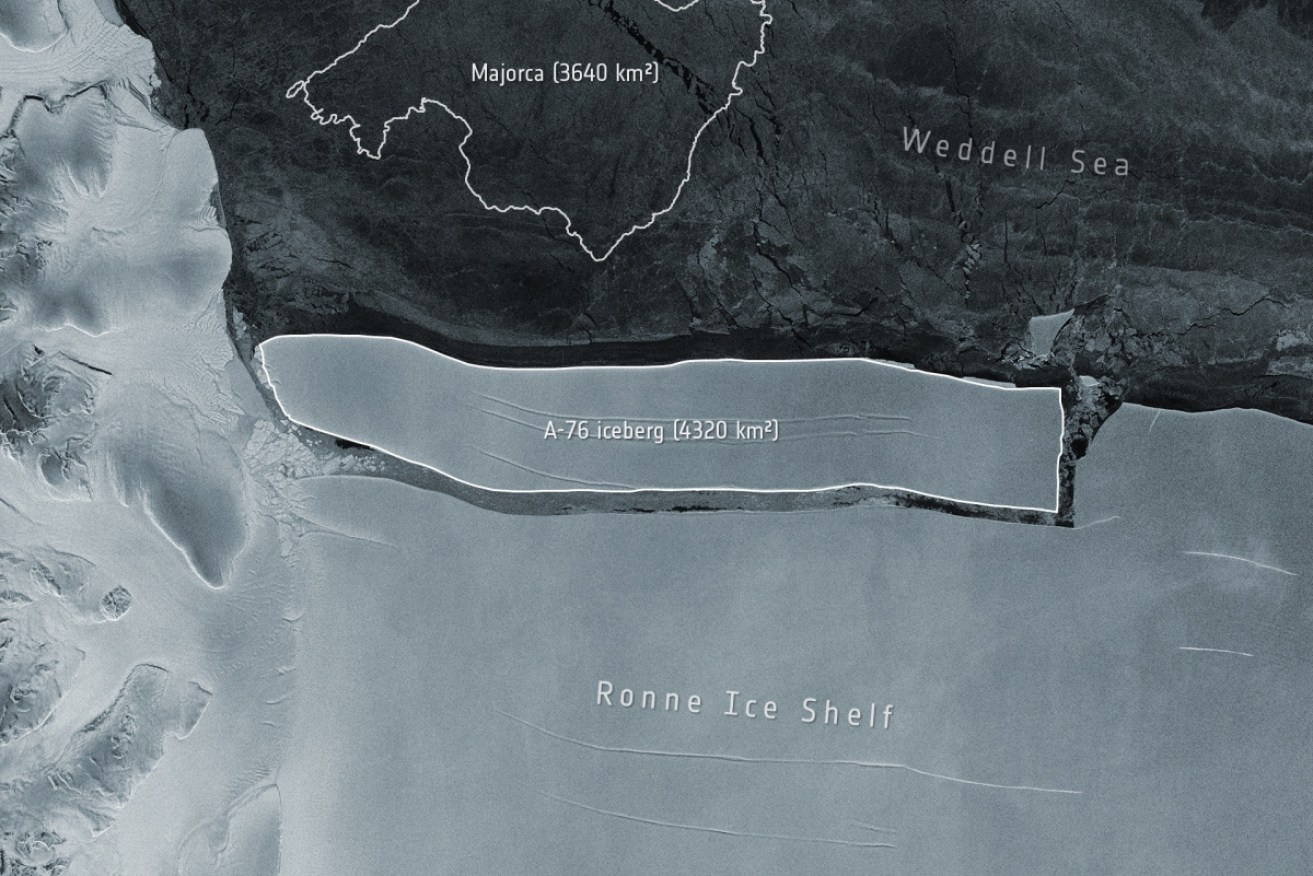New Antarctica iceberg is world’s largest


The iceberg, dubbed A-76, measures around 4,320 square kilometres in size — bigger than the Spanish island of Majorca. Photo: European Space Agency
A massive slab of ice almost twice the size of the Australian Capital Territory that sheared off the frozen edge of Antarctica has been spotted by satellites, and declared the world’s largest iceberg.
The newly calved berg, designated A-76 by scientists, was spotted in recent satellite images captured by the Copernicus Sentinel-1 mission, the European Space Agency said in a statement posted on its website on Wednesday with a photo of the enormous, oblong ice sheet.
Its surface area spans 4320 square kilometres and measures 175km long by 25km wide.
By comparison, the ACT occupies 2358 sq km.
The size of A-76, which broke away from Antarctica’s Ronne Ice Shelf, ranks as the largest existing iceberg on the planet, surpassing the now second-place A-23A – which is about 3380 sq km and also floating in the Weddell Sea.
Another massive Antarctic iceberg that had threatened a penguin-populated island off the southern tip of South America has since lost much of its mass and broken into pieces, scientists said earlier this year.
Once it melts, the new iceberg will not result in a sea-level rise, because it was part of a floating ice shelf – in the same way a melting ice cube doesn’t increase the level of the drink in a glass.
A-76 was first detected by the British Antarctic Survey and confirmed by the US National Ice Center based in Maryland using imagery from Copernicus Sentinel-1, consisting of two polar-orbiting satellites.
The Ronne Ice Shelf on the flank of the Antarctic Peninsula is one of the largest of several enormous floating sheets of ice that connect to the continent’s landmass and extend out into the surrounding seas.
Tweet from @KeithMakinson1
The finger-shaped iceberg isn’t thought to have been caused by climate change.
Periodic calving off of large chunks of those shelves is part of a natural cycle.
But some ice shelves along the Antarctic Peninsula have undergone rapid disintegration in recent years, a phenomenon scientists believe may be related to climate change, according to the US National Snow & Ice Data Centre.
-with AAP








